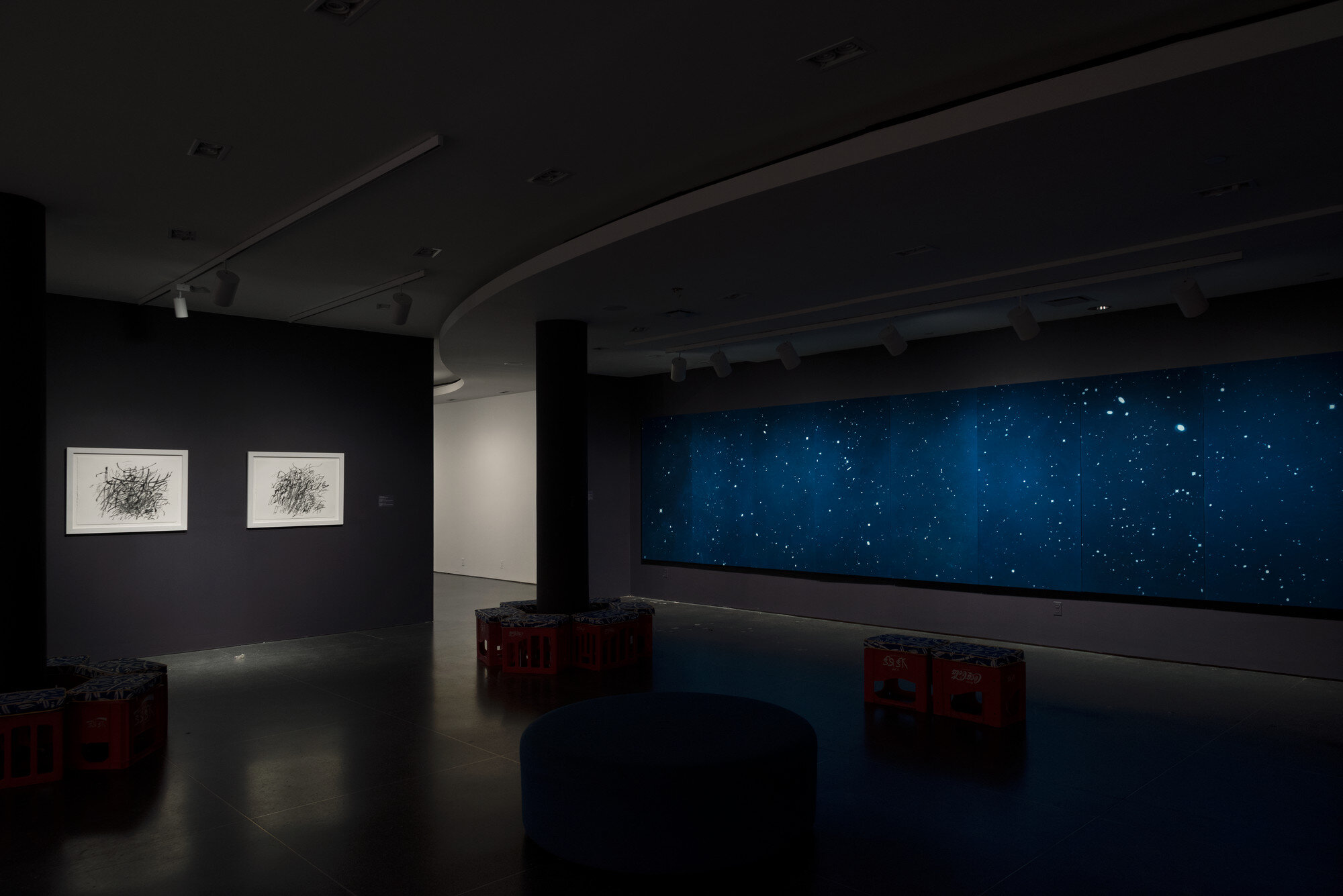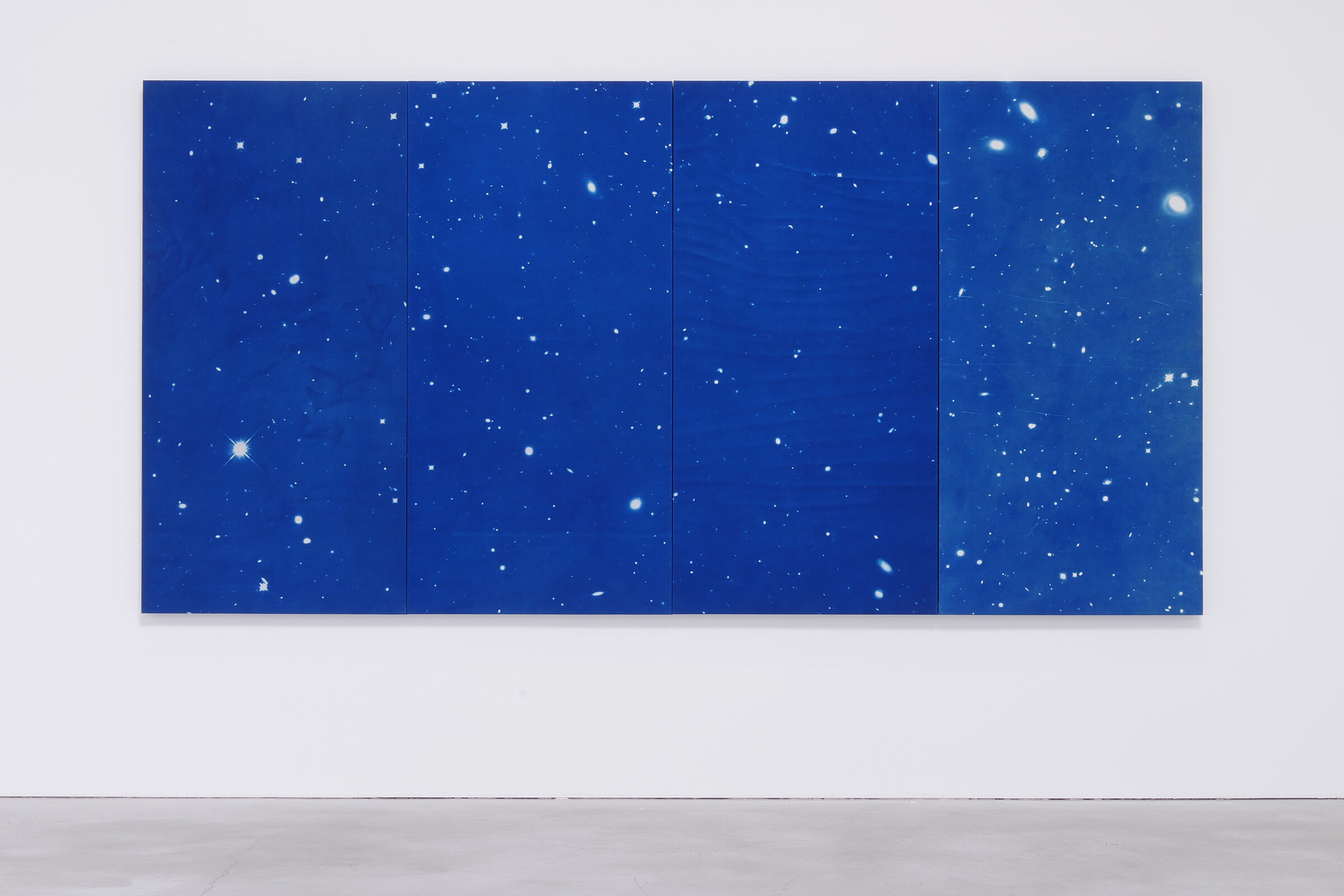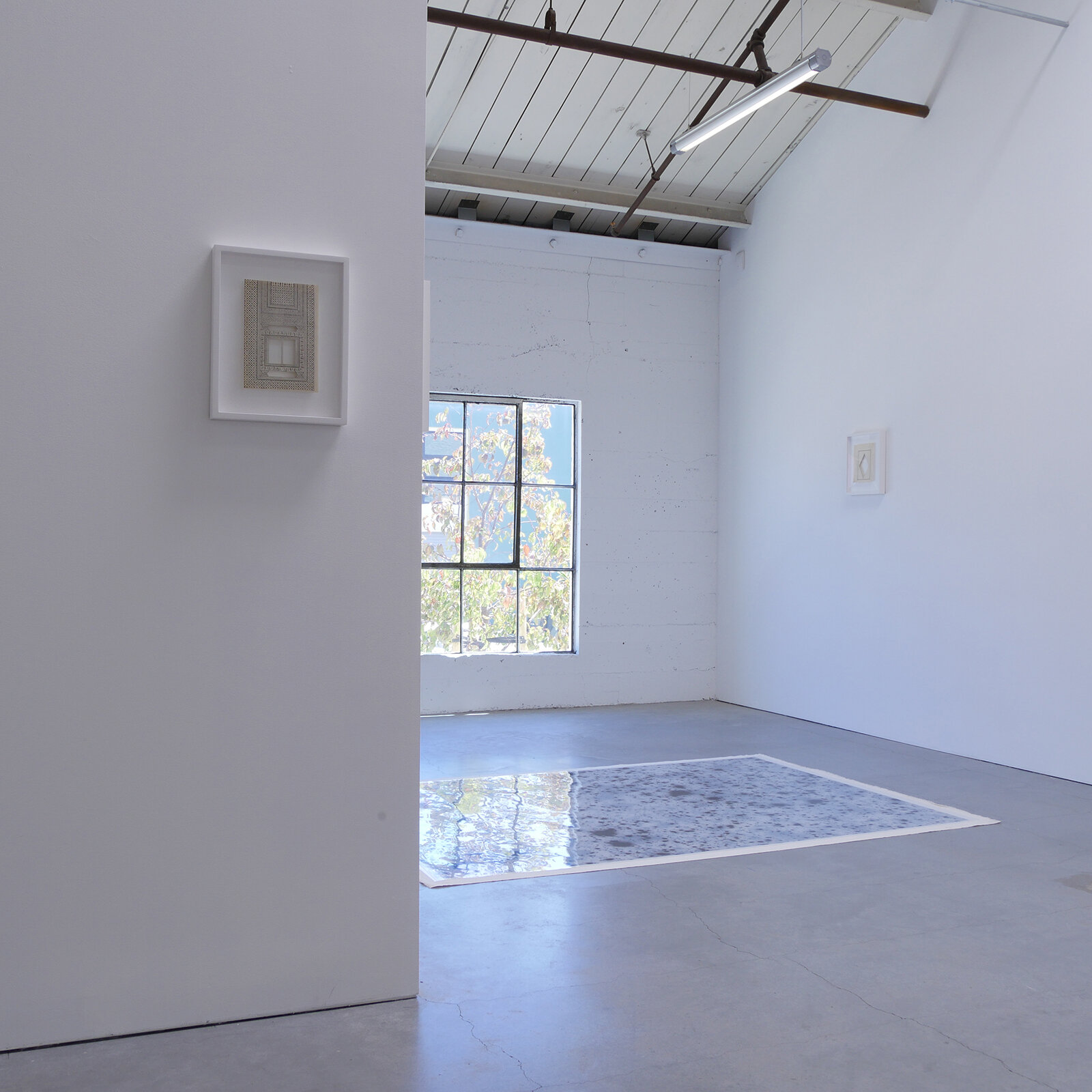Azimuth
...in the Azimuth series as sites/sights in which stark binaries crumble; photography meets painting, science converges with art, and two seemingly opposing world-views (“Western” science and “Eastern” tradition) synthesize.
These points of convergence become more prominent given Ebtekar’s application of the almost alchemical cyanotype technique, in which the surface is treated with potassium ferricyanide and ferric ammonium citrate, where the red iron changes into blue by being exposed to the Sun; from the color of the earth to the color of the sky.
The Azimuth works employ a conceit of poetic simplicity: An image of the cosmos / Brought to life by the light of the cosmos / The very thing it describes. The Hubble telescope images of the night sky, printed as a negatives, are paired and exposed over canvas by the light of the sun, moon and start light. The process is essentially light absorbed into emulsion on canvas afterwhich the image is revealed.
Excerpts from catalogue essays















